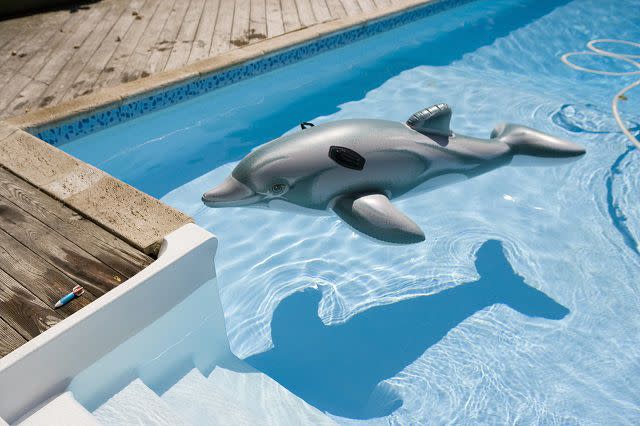How Often Should You Shock Your Pool?
Pool shock is only needed at opening, closing, or if pool water turns green

iStock / Getty Images Plus
Pool owners have the liberty of shocking their pools whenever they see fit, but when do you actually need to shock your pool? You should shock your pool if you need to rapidly raise the chlorine level such as after refilling your pool, suddenly low chlorine level, after a large party, or if your pool turned green after months of inactivity.
What Is Pool Shock?
Shock is a concentrated form of chlorine, which comes in either powder or liquid form in several sizes and quantities. Unlike the standard 3” chlorine tablet, shock is designed to release all at once and rapidly raise the chlorine level.
How Often Should You Shock Your Pool?
If everything is running correctly and the pool water is checked at least once a week, then you should not have to shock your pool more than a few times a season. Generally, when the pool is opened and after the first vacuum, shock is added to prevent the pool from turning green and to limit the time that the pool is exposed to sunlight with no chlorine. Shock is a helpful added preservative when closing a pool to help keep the water cleaner during winter.
Best Time of Day to Shock a Pool
It is best to shock your pool after it is cleaned in the morning, as chlorine levels can decrease as the day goes on for a number of reasons, including excessive leaves and debris in the pool. This will give the shock ample time to circulate and kill bacteria for several hours while not getting used up on excessive amounts of leaves and debris.
You do not want to shock your pool while it is not running because you run the risk of staining your finish. It is also a good idea to brush your pool down after shocking any pool to help mix the shock with the water and to release any bacteria or buildup that could be on the walls.

The Best Tips for Correctly Adding Shock
In a normal pool season, you should only have to shock your pool when opening and closing. If your pool begins turning green or you see the water getting hazy, shocking the pool is a quick way to get everything back under control instead of relying on the slower-working chlorine tablets.
Additional times that a pool could use shock is anytime you add a lot of fresh water, after having a lot of people in the pool, or after an excessive heat wave where there was a lot of sun on the pool.
It is important to make sure that the chlorine level does not stay elevated for too long—an excessively chlorinated pool could burn skin and eyes and cause premature wear and tear of your pool mechanicals including excessive corrosion. When shocking a pool, follow the dosage amounts and instructions on any shock package.
If there is too much chlorine added, wait for the chlorine to burn off after a few days or, for a more immediate result, partially drain the pool and refill it with fresh water.
Frequently Asked Questions
Is it possible to shock your pool too much?
Yes—excessive shocking of your pool will keep it at an elevated chlorine level. This will cause irritation of the skin and eyes as well as excessive wear and tear on your pool filter system, including excessive corrosion of all metal parts.
How frequently should you shock your pool in the summer?
You should have to shock your pool once at opening and if it turns green or after an excessive heat wave or excessive use. Chlorine levels should be monitored weekly to help prevent the need to shock a pool.
What are the signs you should shock your pool?
If your pool is green or the chlorine level is very low, then shock is a good first step to bring your pool chemistry back to the correct levels.
Read Next: Above-Ground Pool Installation for First Timers
Read the original article on The Spruce.

